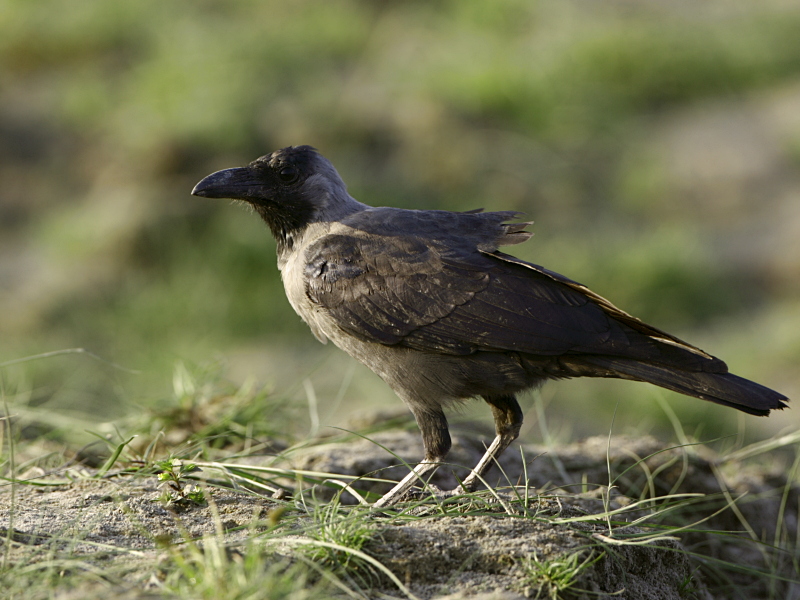| Kingdom: Animalia Phylum: Chordata Class: Aves (Birds) Order: Passeriformes Family: Corvidae |
House Crow (Corvus splendens) is a widespread resident in India. Size: 42 cm Weight: 250-350 gm Identification: Plumage is glossy black, except for the nape, sides of the head, upper back and breast, which are grey. Bill, legs, and feet also black. Sexes alike. Food: Omnivorous. Diet includes seeds, fruit, grain, nectar, berries, bird’s eggs, nestlings, mammals, reptiles, amphibians, fish, insects, wide range of carrion. Call: Normal call a harsh qua qua or a nasal kaan kaan. It also has a couple of softer calls when resting or during courtship. Habits: Highly vocal, gregarious birds, seemingly unafraid of humans. Aggressive, will attack and chase off any large bird of prey. Birds have been reported taking food from school children and killing chicks of domestic fowls. Breeding pairs will repeatedly dive bomb humans near the nest. Habitat: Wholly dependent on human habitation; consequently found in villages, towns, and cities throughout its range. Resorts to altitudinal and seasonal local movements in colder northern areas in winter. Replaced by Large-billed Crows and Jungle Crows in mountains and forests respectively. Breeding: Solitary nester except in areas of high population density. Will use trees, buildings, or other artificial structures for rough stick nest lined with coir or other fibre. Four to five pale blue-green eggs, speckled with brown. Breeding season March through July. Incubation 16–17 days; fledging 21–28 days. Its nest regularly brood-parasitized by Asian Koel. Distribution: All over India except in high altitudes and forests. Also in Iran, Sri Lanka, Pakistan and Burma, self-introduced to East Africa, Indian Ocean islands, Malaysia, and South Africa. Four subspecies: C. splendens splendens, C. splendens zugmayeri (southern Jammu & Kashmir, Punjab and western Rajasthan), C. splendens protegatus (coastal areas, Kerala, Sri Lanka and nearby islets) and C. splendens maledivicus (Maldives islands).
Status: Not threatened. Abundant in its range to the point of being a pest and a threat to other bird species. Read about House Crow's eggs and nests in "The Nests and Eggs of Indian Birds by Allan O. Hume, 1889" |

